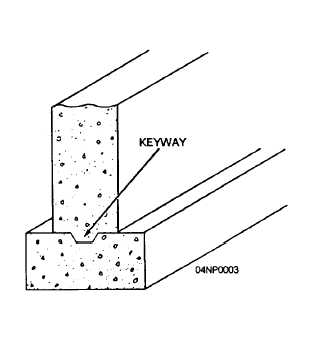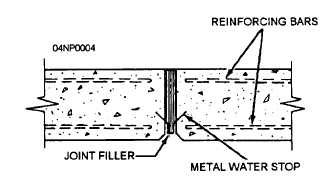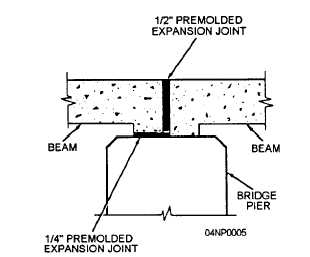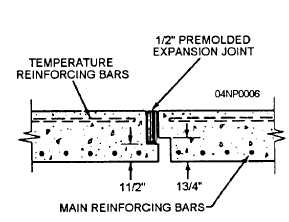Figure 7-22.-Use of a contraction Joint.
incident to shrinkage of the concrete. A typical dummy
contraction joint (fig. 7-22) is usually formed by cutting
a depth of one third to one fourth the thickness of the
section. Some contracting joints are made with no filler
or with a thin coat of paraffii or asphalt and/or other
materials to break the bond. Depending on the extent
of local temperature, joints in reinforced concrete slabs
may be placed at 15-to 25-ft intervals in each direction.
Expansion Joints
Wherever expansion might cause a concrete slab to
buckle because of temperature change, expansion joints
(also called isolation joints) are required. An expansion
joint is used with a pre-molded cork or mastic filler to
separate sections from each other, thus allowing room
for expansion if elongation or closing of the joint is
anticipated. Figures 7-23, 7-24, and 7-25 show
Figure 7-23.-Expansion joint for a wall.
Figure 7-24.-Expansion joint for a bridge.
Figure 7-25.-Expansion joint for a floor slab.
expansion joints for a variety of locations. Expansion
joints may be installed every 20 ft.
CONCRETE FORMS
Most structural concrete is made by placing
(also called CASTING) plastic concrete into
7-17







